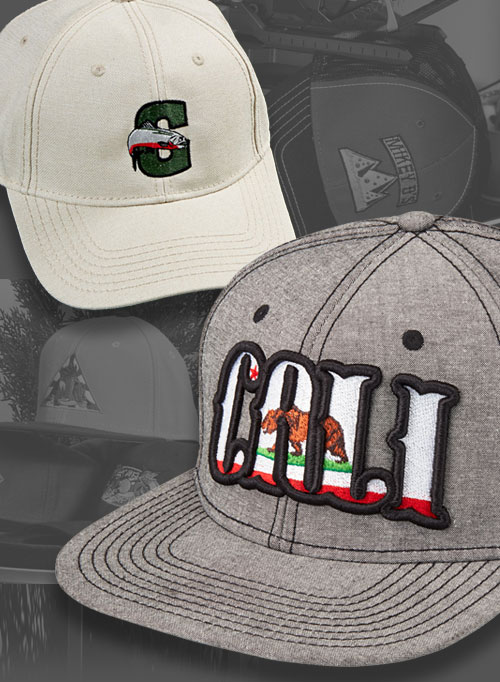Cap Embroidery With Melco Embroidery Machines

Digitizing
A design that has been digitized for a left chest application may not necessarily be suitable for a finished cap application. This is because the construction elements found in a particular design may not be suitable for a suspended, arched cap frame. Cap embroidery involves unique challenges due to the variations in cap construction, making it essential to consider the design elements carefully. Some design elements that work well for left chest applications, such as small details or fine lines, may not translate well onto a cap. Therefore, it’s important to have expertise in digitizing to ensure the design is suitable for the specific cap application.
Machine Operation
There are several things the machine operator can do to improve the run-ability of caps:
1) Needle selection – As a rule, finished baseball caps should only be run with sharp needles in a size 75/11
2) Backing materials – Finished baseball caps come with a variety of front panel backing options as follows:
3) Framing techniques – Most cap frames come with a “jig” or hooping fixture to hold the cap frame while framing.
This is an important tool. It usually clamps to the edge of a work table and should be ergonomically mounted at a height that accommodates our forearms at a horizontal orientation. This fixture is usually designed with a curved surface to emulate the sewing plane when the cap frame is in the machine. If the cap is unstructured or the design has a lot of fill stitches, some manufacturers include “buffalo clamps” that may be attached to the back of the cap to hold the front surface tight against the sewing plane. If the cap is structured (usually a fused Buchram or heavy Pelon backing), these clips may be omitted to speed up production.
4) Thread Feed (Tensioning) – The final piece of this puzzle lies in proper thread feed (tensioning) for finished caps:
Final Thoughts
One last thought when embroidering caps: do both the front and side panels on the same run. Even though cap frames were designed to run embroidery on a horizontal plane that theoretically spans 270 degrees of cap frame rotation, the actual sewing field may be limited. Once again, the construction of the individual cap will dictate whether you can comfortably frame that particular style of cap and effectively embroider the side panels on the same run. If the embroidery design and the cap design permit you to do so, by all means do so. If you can’t turn the sweatband where it is sewn to the adjustment strap, consider another option for that application. Sew the front embroidery as you normally would and then run the sides with a different framing system designed by Fast Frames, either the clamping model or the one that uses sticky backing.
Once you learn the skill sets to work with this unique medium, you will find excellent results with minimal additional effort.